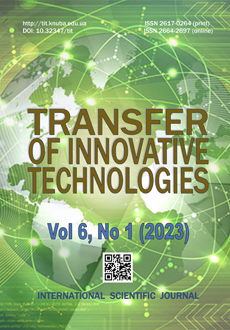Corrosion properties of aluminum-based alloys used in building constructions for different purposes
DOI:
https://doi.org/10.32347/tit.2023.61.0201Keywords:
corrosion resistance, aluminium alloy АD 31, gravimetric method, weight and deep parameters of corrosionAbstract
The corrosion resistance of an aluminium alloy АD 31, that is used in building constructions, is investigated. The connection between change of samples weight and time of corrosion tests is established. It is shown, that the corrosion is accompanied by simultaneous course of two processes: by oxide film formation and dissolution of more active metal. The temperature dependences have shown, that with the temperature increase higher 80°С the corrosion resistance is reduced. The accounts of weight and deep parameters of corrosion are made.
References
"Modern building constructions." Facade sys-tems", No. 3, (2007), 28-33.
Dworkin L. Y., Lapovska S. D. (2017). Construction materials science. Textbook. Condor Publishing House, Kyiv, 2017, 472 (in Ukrainian).
Byk M. V., Bouquet O. I., Vasiliev G. S. (2018). Protecting methods of equipment from corrosion and protection at the design stage. KPI named after I. Sikorskyi, Kyiv, 2018, 318 (in Ukrainian).
Aftandilyants E., Zazymko O., Popatko K. (2013). Materials Science. Pira-K Publishing House, Oldi Plus, 2013, 350. (in Ukrainian).
Unified method of laboratory tests of the effectiveness of corrosion inhibitors in water systems. Riga: George Institute. of Chemistry of the Academy of Sciences of the Lithuanian SSR, (1980), 29.
Downloads
Published
How to Cite
Issue
Section
License
Copyright (c) 2023 Vira Grechanyuk, Oleksandra Matsenko, Victoriya Chornovol, Igor Grechanyuk

This work is licensed under a Creative Commons Attribution 4.0 International License.
Our journal abides by the CREATIVE COMMONS copyright rights and permissions for open access journals.
Authors, who are published in this journal, agree to the following conditions:
1. The authors reserve the right to authorship of the work and pass the first publication right of this work to the journal under the terms of a Creative Commons Attribution License, which allows others to freely distribute the published research with the obligatory reference to the authors of the original work and the first publication of the work in this journal.
2. The authors have the right to conclude separate supplement agreements that relate to non-exclusive work distribution in the form in which it has been published by the journal (for example, to upload the work to the online storage of the journal or publish it as part of a monograph), provided that the reference to the first publication of the work in this journal is included.




